ADS Automatic Door Specialists has posted numerous blogs about the importance of regular homeowner inspections. We deal daily with garage door problems, sometimes in an emergency mode, that might have been averted with some simple attention and basic knowledge of what to look for – a safety checklist of potential problems to identify and take care of to keep your garage door functioning reliably and safely.
Check Point One: Make Sure Your Garage Door Isn’t Blindfolded
Yes, garage doors have eyes – the two photo eyes are aligned across the bottom, each sending an electronic beam that is read on the other side. If the beam is interrupted, a signal is sent to the opener to immediately halt and reverse a door’s descent, averting damage or injury to whatever, or whomever caused the disrupted signal. Before this feature was mandated by law, there were numerous instances of fatal accidents involving garage door closures, most involving young children. But this life-guarding technology is dependent on regular human inspection to work the way it needs to.
Here’s what you need to do, regularly: test the garage door photo eyes by laying an item across the path of the electron beam. This runs across the width of the door (the threshold, so to speak), very close to the floor. A simple piece of scrap 2 x 4 is the most common prop for this test, but an old dog blanket or cardboard box works just as well. With the obstruction in place, try closing the door with your remote or keypad. If it detects the object and reverses direction, you’re good. If it descends to the floor, you’ve potentially got a “blindfolded” photo-eye. Check the eyes for both alignment and impairment (cobwebs, dust) and try again. If the test still fails, you’re smart to call ADS Automatic Door Specialists for a closer look at the problem.
Checkpoint Two: Please Release Me…
If you’ve never used the red plastic knob attached to the red cord dangling for the center of the opener tracks, or don’t even know what it is there for, read this next part carefully. It’s the garage door emergency release, and there may come a day when you are very relieved you know what to do with it. All automatic garage doors (“automatic” refers to the electronic mechanisms for opening and closing the door) will have this feature. It is a simple, manually operated backup device for closing or opening the garage door by hand if the opener fails or the power goes off. Take a couple of minutes to familiarize yourself with the emergency release and test it out. When you’ve done this once or twice, you will have the confidence to take control of your door when you need to. Testing it also confirms it is in good working order; if it doesn’t release and operate easily, you may need a ADS Automatic Door Specialists specialist to take a look. Don’t put this off – there is a reason it is called an “emergency” release.
A couple of other points concerning the emergency release. First, there are times when you should NOT use it; most pointedly, when the torsion springs required for the safe operation of the door break or otherwise fail. The door could come crashing down if you pull that red cord, causing damage or injury.
Secondly, you’ll want to make sure your door isn’t vulnerable to a security breach by burglars. As car thieves know how to quickly break into a car, house thieves can use a visible release cord to bypass the security features of an automatic door system. The easiest way to make sure it isn’t accessible is to pin it alongside the door on the inside wall.
Check Point Three: Family Safety Rules
We don’t let young children work with power tools or drive the family car. Simply, automatic garage doors can pose risks like those self-evident with these other devices, and you should have a similar parental vigilance with the remotes and keypads that are so tempting to children. Take the time to talk with your kids about the importance of personal safety around the garage door, such as not running beneath the door when it is in operation, and let them know some things are off-limits – specifically, the remotes.
Check Point Four: Watch Your Calendar for Scheduled Service
If you have an annual service contract with ADS Automatic Door Specialists, you’re well ahead of the curve. There will be a sticker on or near the door with a date of service. Put that on your calendar or smartphone where you will be reminded when the date draws near. If you don’t have this highly recommended tune-up plan, don’t feel bad; many homeowners are woefully neglectful of the garage door’s service needs. The fact that you’ve gotten this far in this blog indicates you take proper maintenance seriously. The next easy step, while you’re thinking about it, is to key in the following numbers on your mobile or landline: 858-544-5757. That’s us, ADS Automatic Door Specialists, and we stand by ready to answer your questions and share with you some good options for keeping your garage door running smoothly, reliably, and most importantly, safely.

